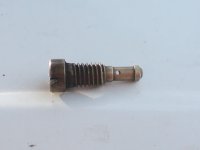Hi there,
Im new to the forum, seems a very nice forum also. I have a problem with my Uno regarding fuel.
I usually do about 25 - 30 mpg normal driving.. However i was not happy bout this.. i tampred the fuel mixture and now engine is not working very well.. how is the screw supposed to be and how can you check if it is lean or rich and what are symptoms????
I have recently changed the oil and filter..even the plugs... and got the carb cleaner too.. however i filled it a little extra than normal oil (very little)
When i took out the plugs to check them, they were filled with what seems to be engine oil, engine seems to overheat more than normail and also when engine is normal temperature it revs at 800k, when getting hot near 90, it revs at 1200 - 1300 k. however this varies
About an hour ago before going to work i removed some oil and made it a bit lower as i though problem of oily plugs may come from there.. I wonder what can I check more?
- High fuel consumption
- Revs varies
- Minor overheating
Tnx,
Anthony Farrugia
Im new to the forum, seems a very nice forum also. I have a problem with my Uno regarding fuel.
I usually do about 25 - 30 mpg normal driving.. However i was not happy bout this.. i tampred the fuel mixture and now engine is not working very well.. how is the screw supposed to be and how can you check if it is lean or rich and what are symptoms????
I have recently changed the oil and filter..even the plugs... and got the carb cleaner too.. however i filled it a little extra than normal oil (very little)
When i took out the plugs to check them, they were filled with what seems to be engine oil, engine seems to overheat more than normail and also when engine is normal temperature it revs at 800k, when getting hot near 90, it revs at 1200 - 1300 k. however this varies
About an hour ago before going to work i removed some oil and made it a bit lower as i though problem of oily plugs may come from there.. I wonder what can I check more?
- High fuel consumption
- Revs varies
- Minor overheating
Tnx,
Anthony Farrugia


